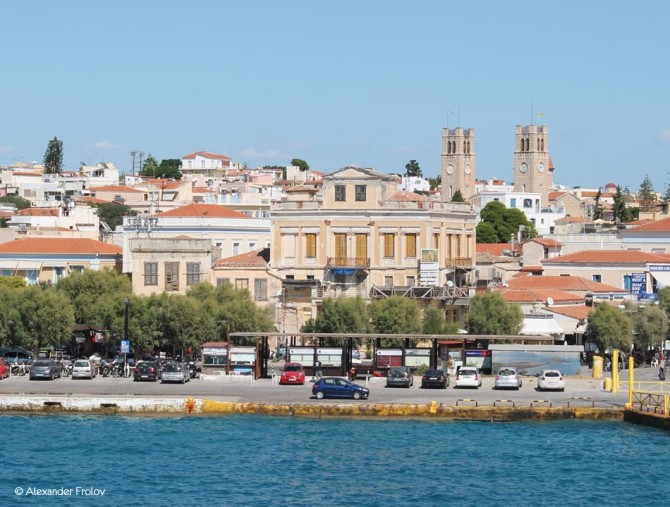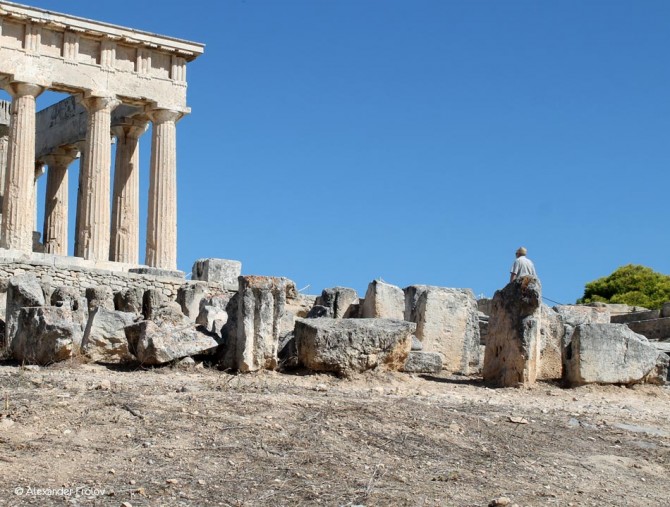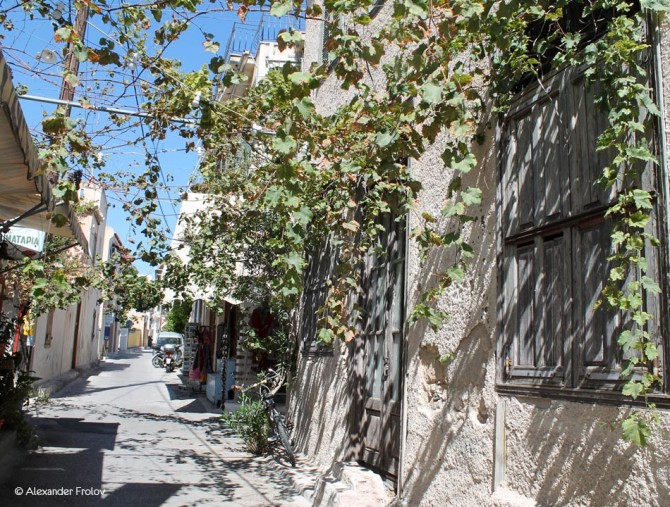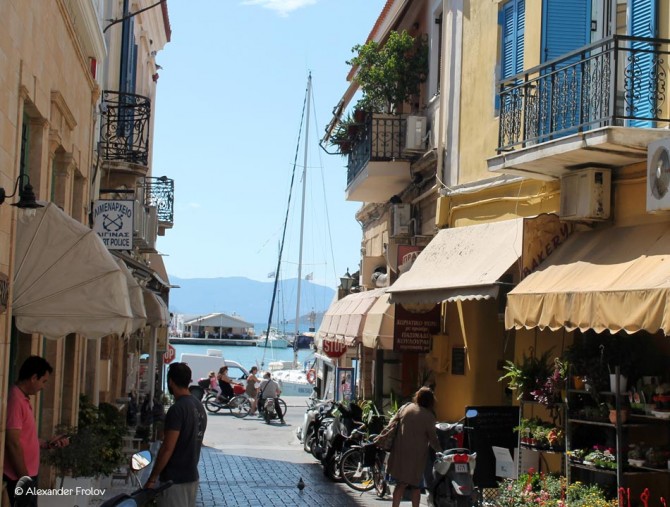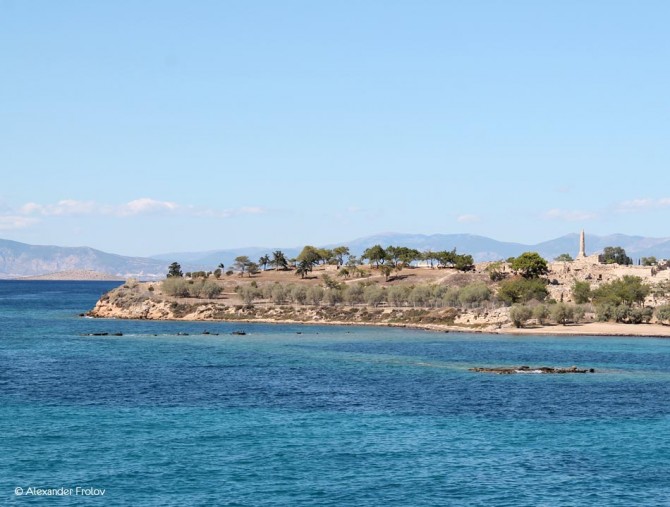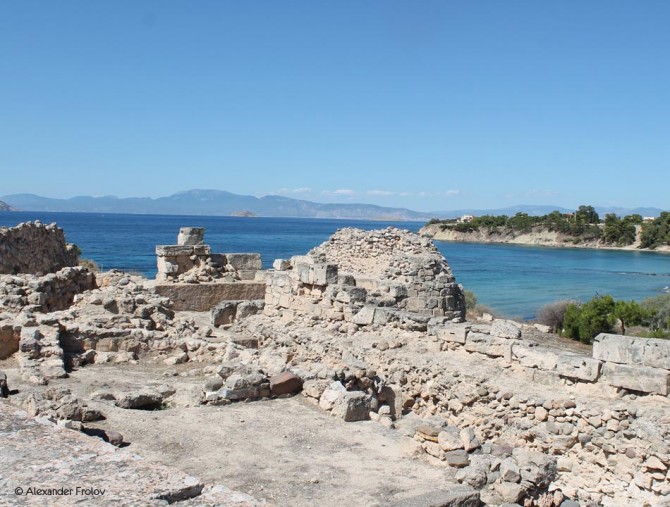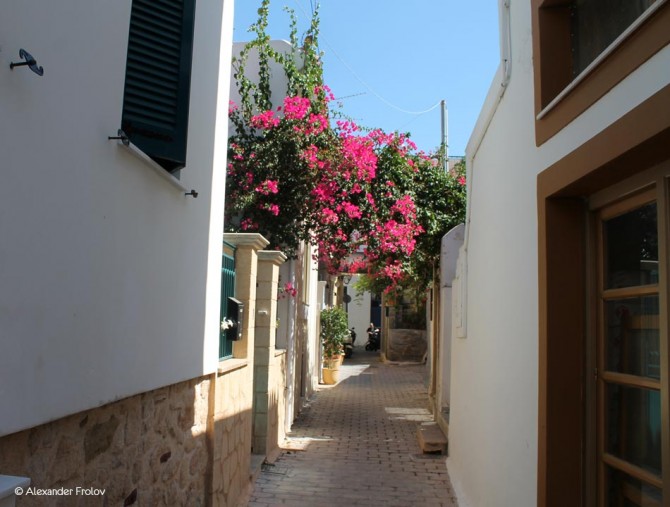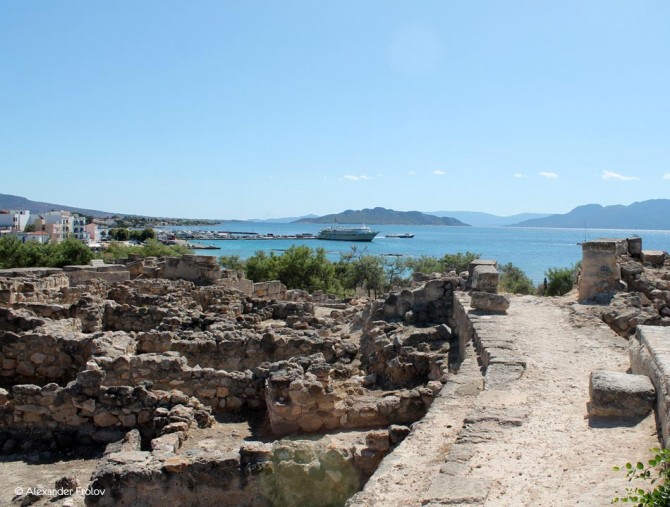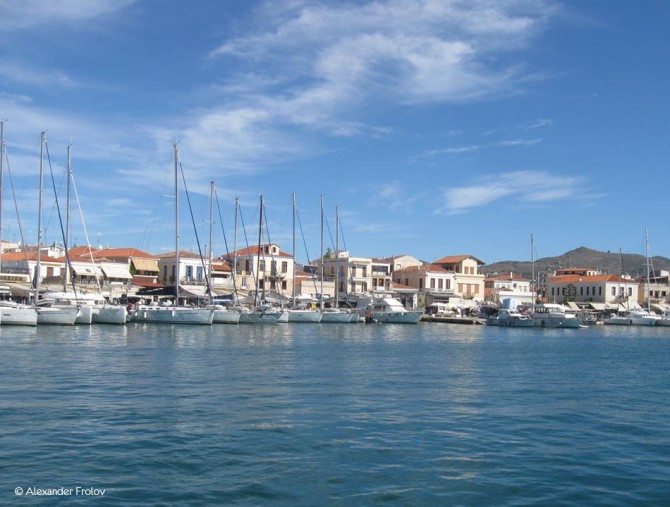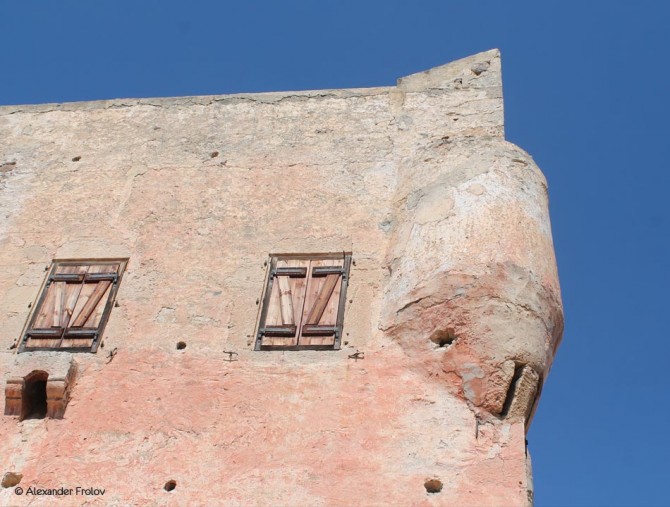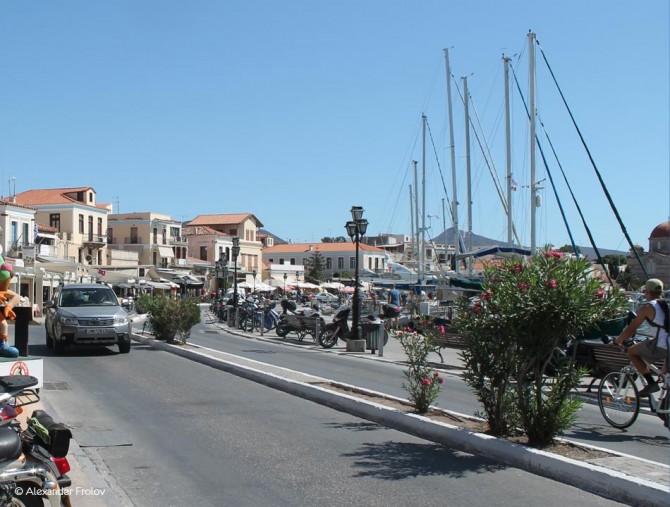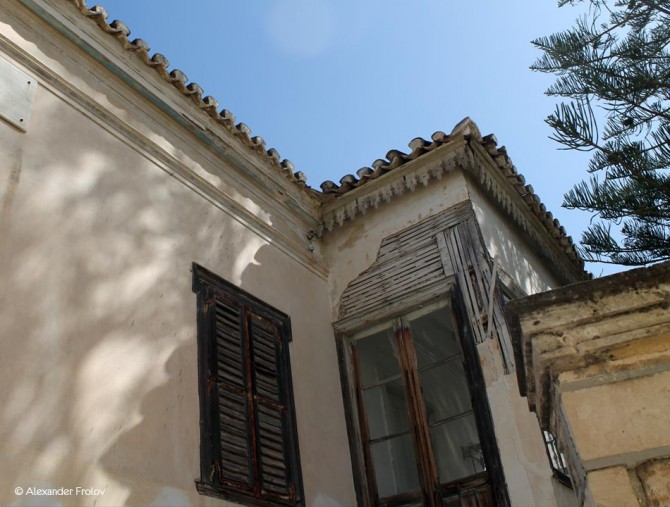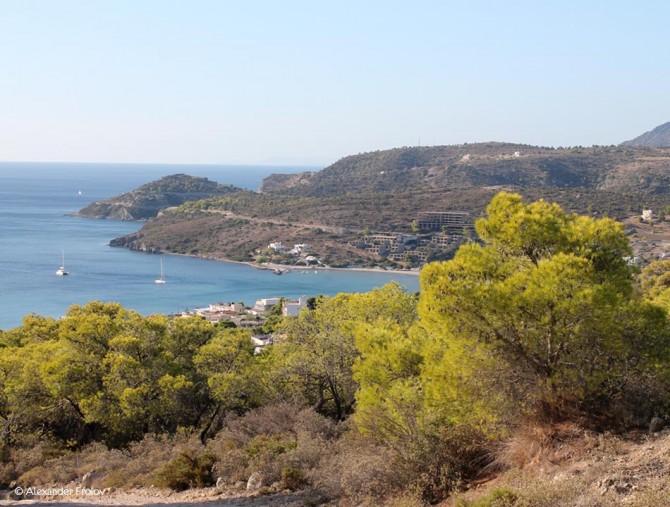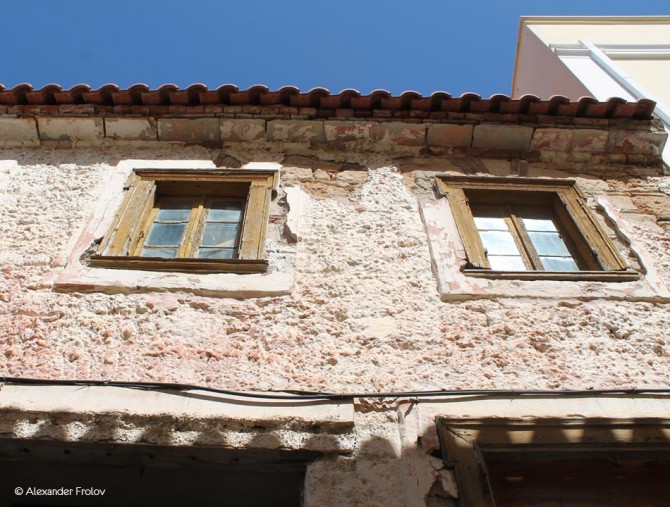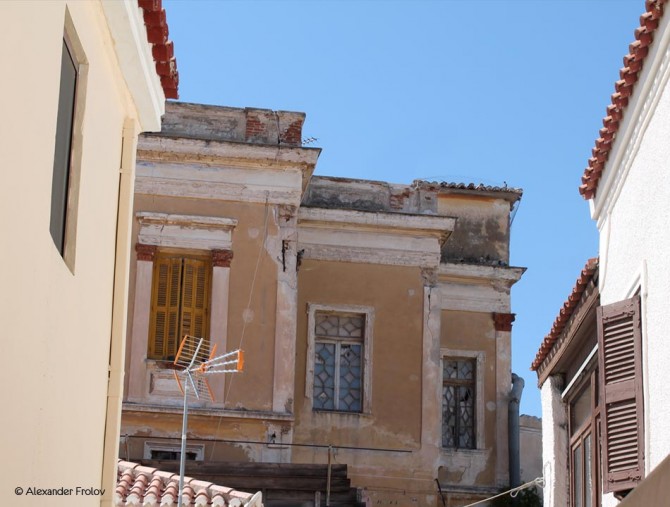Эгина
Остров Эгина находится в Сароническом заливе, на расстоянии одного часа и пятнадцати минут езды на пароме из порта Пирея. Изначально остров назывался Иноми, однако свое нынешнее название приобрел так. Зевс был влюблен в одну из двадцати дочерей бога Ассоса по имени Эгина. Он похитил ее и принес на остров.
Первыми жителями острова, согласно местному мифу, были мирмидоняне, превращенные по воле Зевса в людей из муравьев. Они были первыми подданными сына Зевса Эака. Вскоре после вторжения дорян в Пелопоннес эпидаврийцы (доряне) завладели Эгиной и быстро доризировали её. Так остров стал колонией Эпидавра.
Население Эгины возрастало стремительно. Если верить Аристотелю - в V - IV веках до н.э. оно достигало полумиллиона человек.
Внутри острова промышленность и торговля были главными занятиям эгинеров. Они выделывали благовония и изготовляли керамические изделия. Особенно славилась эгинетская медь, из которой отливались статуи. Эгинеты впервые ввели искусство чеканки монет и нормировали меры веса. Эгинская денежная система была принята в большинстве городов Греции. До и после персидских войн Эгина вела непрерывную войну с Афинами, но во время нашествия персов, забыв прежние споры, приняла видное участие в сражениях при Саламине, Платеях и Микале.
Причиной войн Эгины с Афинами служило политическое соперничество обоих государств, а также то обстоятельство, что строго аристократический правящий класс острова с ненавистью относился к усиливающейся афинской демократии. В 133 году до н.э. Эгина была завоевана римлянами и стала приходить в упадок.
При византийских императорах Эгина была частью Эллады.
Возрождение Эгины началось примерно в 400 году н.э., когда многие жители Пелопоннеса перебрались на остров, спасаясь от вторжения готов и герулов.
Интересно, что здесь располагалась первая столица свободной Греции в 1828 году. Штаб правительства под руководством Иоанна Каподистрии находился в башне венецианского замка Марцелла, построенного в XVII веке. Этот замок сейчас - одна из главных достопримечательностей острова. В дальнейшем столица была перенесена в город Нафплион. Также на острове стоит посетить византийский Храм Святого Николая Талассиноса (моряка), археологические раскопки, где можно увидеть останки Храма Зевса, местный археологический музей. И конечно же на острове огромное количество пляжей. Например, Агия Марина - первый пляж в Сароническом заливе, удостоенный голубого флага. Также стоит посетить пляжи: Сувала, Вагия, Мони, Портес, Эгиница, Пердика и Марафонас.
Как добраться до острова Эгина:
- на пароме из порта Пирея. Ежедневные рейсы (1 час, 15 минут), тел. +30 210 41 17 341/41 17 190/41 26 528, тел. порта Эгины: +30 22 970 22 945/24 200
- на Летучем Дельфине (35 минут)
Фото и текст: Александр Фролов
Aegina
As the ferry boat arrives at the port of Aegina, the first thing you will see is the small whitewashed temple of Saint Nickolas Thalassinos (The Seaman). And then your sight will be captured by the beautiful neoclassical buildings, arranged one next to the other across the street. Aegina is a picturesque island of the Saronic Gulf, just a breath away from the port of Piraeus. This is one of the many reasons that make this island a popular destination, either for the weekend or for a longer stay. According to archaeological findings, the island was first inhabited between 3500-3000 BC. Its initial name was Oinoni. The legend has it that Zeus fell in love with Aegina, the most beautiful of the 20 daughters of god Asopos. He kidnapped her and carried her to Oinoni. They had a son, Aiakos, who became the king of the island. And that is how Oinoni took the name Aegina. Between 2000-1600 BC, the Aeginitians began developing a commercial and naval activity, while around 1400-1300 BC, the Mirmidones (the people of the Achilles, the hero of Troia), derived from Thessaly, settled to Aegina and founded the Temple of Hellanious Zeus on the Hellanion mountain. Today only the foundations of the majestic edifice and the bases of three rows of columns are preserved. Apart from the archaeological value of the place though, you will also enjoy a breathtaking view. In the following centuries, Aegina continued to grow, while around 500 BC monopolized the trade in the Eastern Mediterranean and reached its economic prosperity. The decline began in 133 BC, when Aegina was conquered by the Romans and was ruined. The town was rebuilt and the trade was reborn around 400 AD, when many Peloponnisians moved to Aegina to escape the invasions of the Goths and the Heruli. In the Archaeological Museum of Aegina, in Kolona, you will make a tour to its glorious past. Kolona, by the way, is a significant archaeological site of Aegina, located at the left side of the port and it was the Acropolis of the island in antiquity. Another thing you should also know about Aegina is that it was the first capital of free Greece in 1828, commanded by Ioannis Kapodistrias. The headquarters was housed in the beautiful Tower of Marcellus, a Venetian tower of the 17th century, which today is one of the attractions of the island, while the ground floor often hosts exhibitions. Talking about the attractions of Aegina, let’s not forget the beaches. Souvala, Agia Marina (the first beach in the history of Aegina and the Saronic Gulf that was awarded with the Blue Flag in 2013), Vagia, Moni, Portes, Aeginitissa, Marathonas, Perdika will offer you magic moments. History, sea, great hospitality, delicious seafood and fun day and night in a small paradise, so close to Athens. What more could we ask?
How to get there: By ferry boat from Piraeus. The routes are daily and the journey time is 1 hour and 15 minutes. Saronic Ferries tel.: +30 210 41 17 341/41 17 190/41 26 528. Aegina tel.: +30 22970 22 945/24 200. By flying dolphin from Piraeus. The routes are daily and the journey time is 35 minutes. Flying Dolphins: Aegina tel.: +30 22970 27 462, Piraeus tel.: +30 210 41 99 000. AEGEAN Flying Dolphins: Aegina tel.: +30 22970 25 800, Piraeus tel.: +30 210 42 21 766.
Τext: Marilou Pantazi

